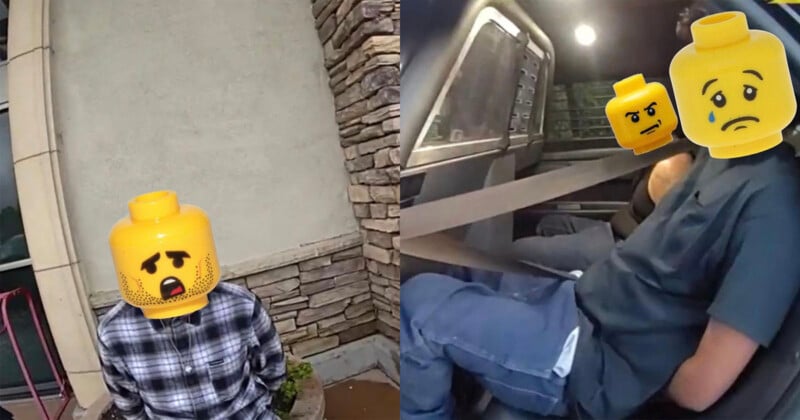
To comply with a recent law that restricts how Californian law agencies can share photos and mug shots of suspected criminals, one police force is placing Lego heads on suspects to conceal their identities.
Murrieta Police Department has been updating the local community with the work it has been doing on its social media channels. But when sharing photos of suspects, it has been placing Lego heads over faces.
The Murrieta Police Department is technically abiding with Assembly Bill 1475, which prohibits police departments from posting mug shots of nonviolent suspects, but it’s probably not what lawmakers had in mind.
“The Murrieta Police Department prides itself in its transparency with the community, but also honors everyone’s rights & protections as afforded by law; even suspects,” reads an Instagram post from the MPD. “In order to share what is happening in Murrieta, we chose to cover the faces of suspects to protect their identity while still aligning with the new law.”
The new legislation that was passed into law and signed by Gov. Gavin Newsom prohibits law enforcement from posting mug shots of nonviolent suspects on social media unless it aids the capture of the suspect. Other exceptions include if a judge orders the release of the photo or if there is an existing threat to others.
![]()
The state also enacted Assembly Bill 994 which requires mug shots of any suspect to be removed from social media within 14 days unless there are special circumstances.
It seems self-evident that the Murietta Police Department is making a point by continuing to post photos of nonviolent suspects but adding Lego heads.
Murrieta Police Lt. Jeremy Durran tells the Los Angeles Times that “in the interest of keeping our residents updated on public safety events in our community while, at the same time, respecting the new regulations, we’ve been obscuring the faces of suspects in our social media posts in various ways.”
![]()
However, a professor of sociology and criminology at Cal Poly Pomona, tells the newspaper that publishing such pictures could damage a person’s reputation.
“Murrieta is saying that they’re publishing the photos out of a need for transparency, but if you already have a description of the crime that occurred, what’s the need for a photograph that has no relevant information?” says Peter Hanink. “The photo obscures the face and then it’s just a body, so what’s the need for the photo?”
Hanink accuses the Murrieta police department of dehumanizing those who have been arrested.
“The effect is comical, that this is something to mock and take lightly,” he says. “They could’ve easily blurred out the faces and that would’ve achieved the same purpose. To use these other things, these non-human placeholders, it’s part of a long tradition of humiliating and public shaming people who are arrested.”
ABC 7 reports that the Lego Group has requested the Murrieta Police Department cease using its trademarked images on social media. The Murrieta Police have replied that it will comply with the request and will find a different option for covering faces of suspects they arrest.
Image credits: Murrieta Police Department
